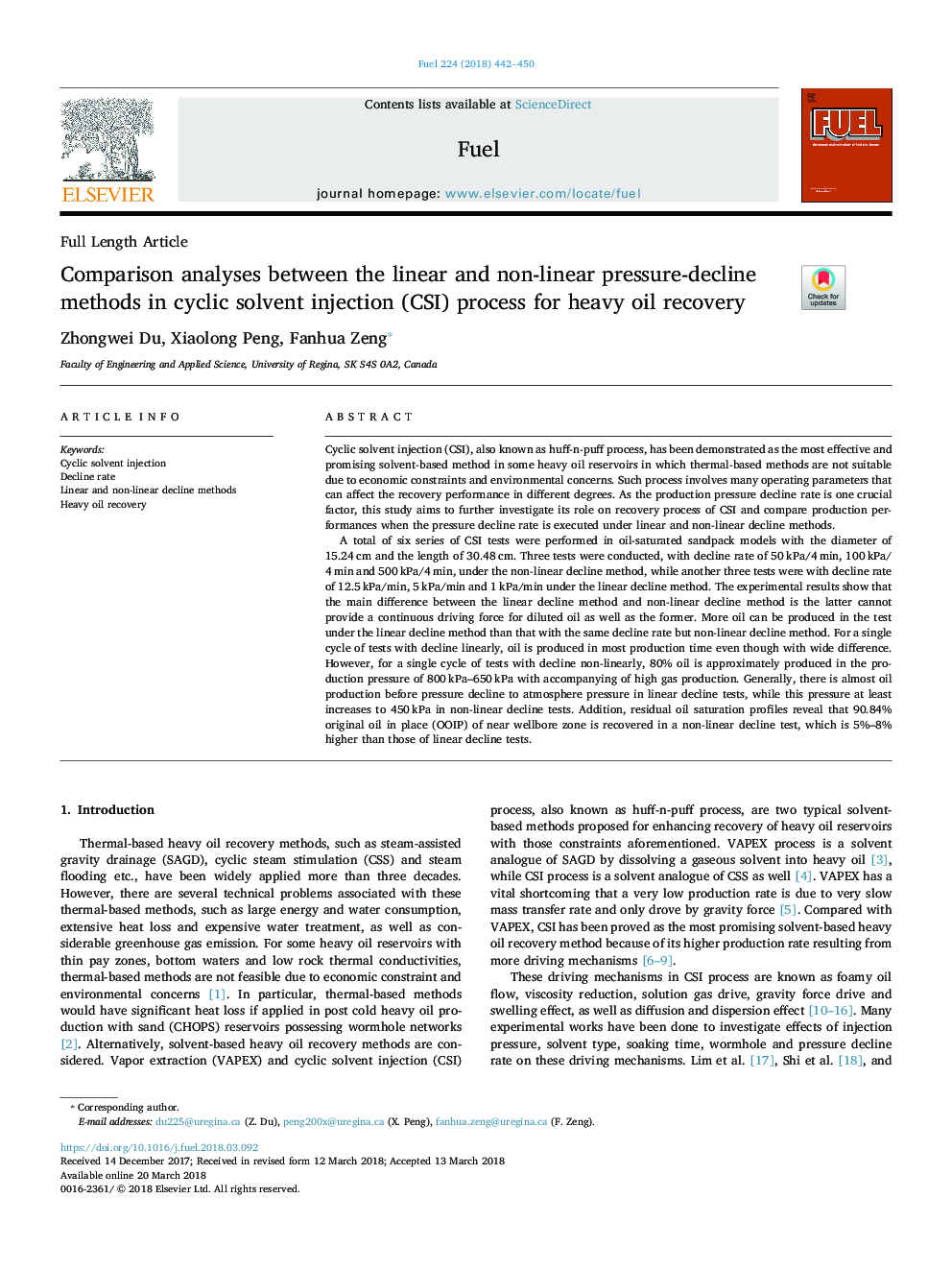| Article ID | Journal | Published Year | Pages | File Type |
|---|---|---|---|---|
| 6631174 | Fuel | 2018 | 9 Pages |
Abstract
A total of six series of CSI tests were performed in oil-saturated sandpack models with the diameter of 15.24â¯cm and the length of 30.48â¯cm. Three tests were conducted, with decline rate of 50â¯kPa/4â¯min, 100â¯kPa/4â¯min and 500â¯kPa/4â¯min, under the non-linear decline method, while another three tests were with decline rate of 12.5â¯kPa/min, 5â¯kPa/min and 1â¯kPa/min under the linear decline method. The experimental results show that the main difference between the linear decline method and non-linear decline method is the latter cannot provide a continuous driving force for diluted oil as well as the former. More oil can be produced in the test under the linear decline method than that with the same decline rate but non-linear decline method. For a single cycle of tests with decline linearly, oil is produced in most production time even though with wide difference. However, for a single cycle of tests with decline non-linearly, 80% oil is approximately produced in the production pressure of 800â¯kPa-650â¯kPa with accompanying of high gas production. Generally, there is almost oil production before pressure decline to atmosphere pressure in linear decline tests, while this pressure at least increases to 450â¯kPa in non-linear decline tests. Addition, residual oil saturation profiles reveal that 90.84% original oil in place (OOIP) of near wellbore zone is recovered in a non-linear decline test, which is 5%-8% higher than those of linear decline tests.
Related Topics
Physical Sciences and Engineering
Chemical Engineering
Chemical Engineering (General)
Authors
Zhongwei Du, Xiaolong Peng, Fanhua Zeng,
